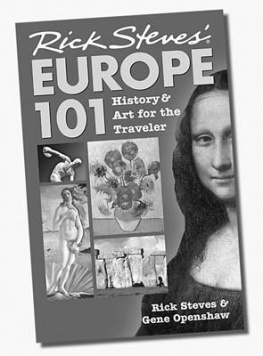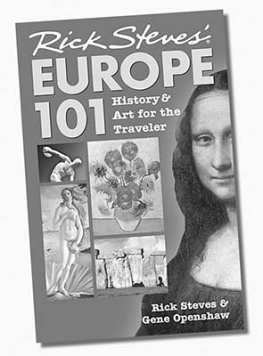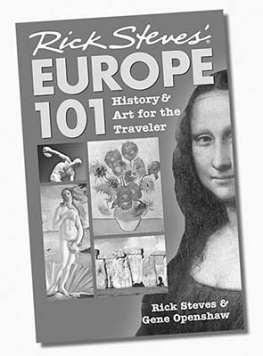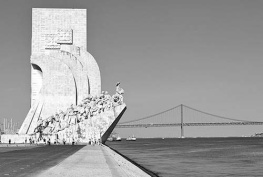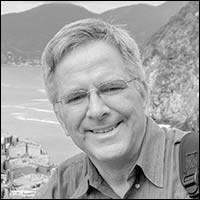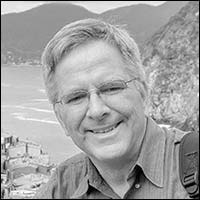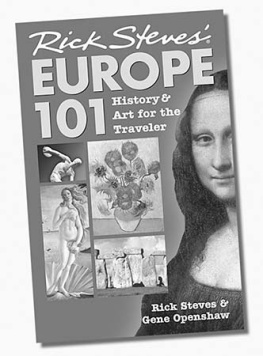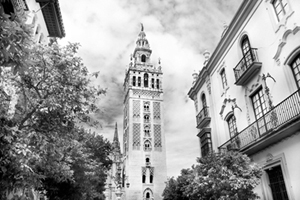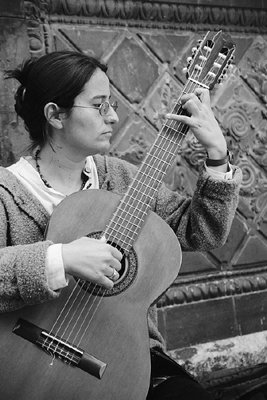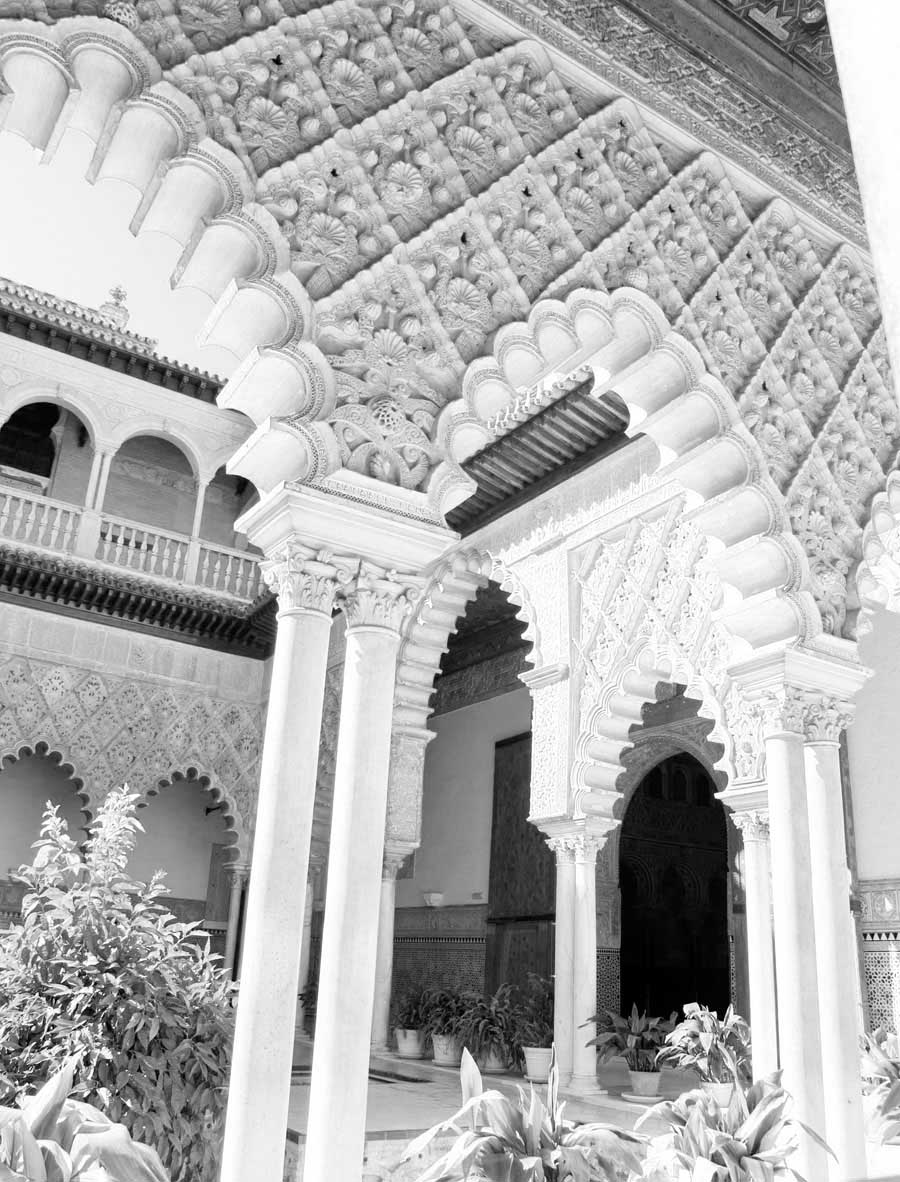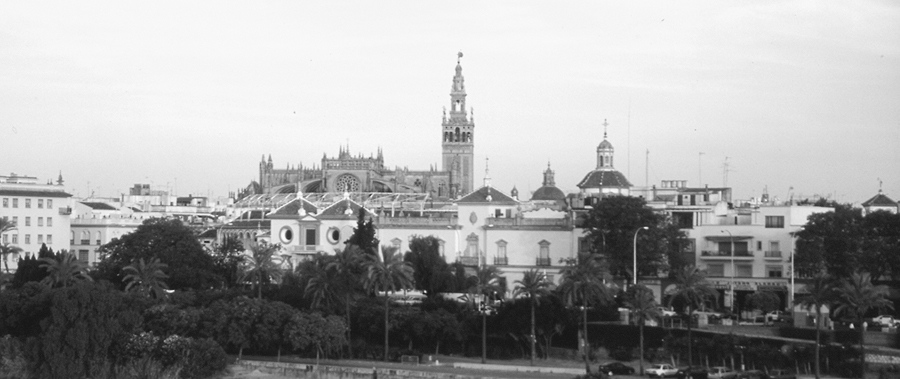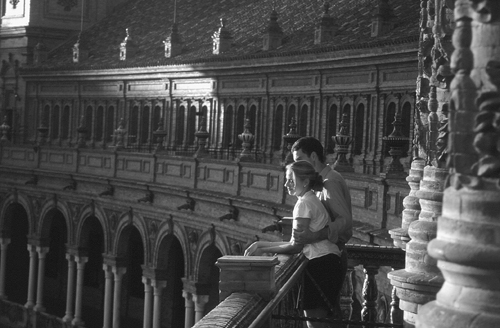Rick Steves'
SNAPSHOT
Sevilla, Granada & Southern Spain
This Snapshot guide, excerpted from my guidebook Rick Steves Spain, introduces you to southern Spains two top citiesSevilla and Granadaand the surrounding Spanish heartland. When Americans think of Spain, they often picture this region, with its massive cathedrals, Moorish palaces, vibrant folk life, whitewashed villages, bright sunshine, and captivating rat-a-tat-tat of flamenco.
Sevilla is the soulful cultural heart of southern Spain, with an atmospheric old quarter and riveting flamenco shows. Granada, formerly the Moorish capital, is home to the magnificent Alhambra palace. Crdoba features Spains top surviving Moorish mosque, the Mezquita. Make time to delve into Andalucas sleepy, whitewashed hill towns: Arcos de la Frontera, Ronda, and Grazalema. Spains south coast, the Costa del Sol, is a palm-tree jungle of beach resorts and concrete, but has some appealing destinationsNerja, Tarifa, and Gibraltarbeyond the traffic jams. And since its so easy, consider an eye-opening side-trip to another continent by hopping the ferry to Tangier, the newly revitalized gateway to Morocco (and to Africa).
To help you have the best trip possible, Ive included the following topics in this book:
Planning Your Time, with advice on how to make the most of your limited time
Orientation, including tourist information (abbreviated as TI), tips on public transportation, local tour options, and helpful hints
Sights with ratings:
Dont miss
Try hard to see
Worthwhile if you can make it
No ratingWorth knowing about
Sleeping and Eating, with good-value recommendations in every price range
Connections, with tips on trains, buses, and driving
Practicalities, near the end of this book, has information on money, phoning, hotel reservations, transportation, and more, plus Spanish survival phrases.
To travel smartly, read this little book in its entirety before you go. Its my hope that this guide will make your trip more meaningful and rewarding. Traveling like a temporary local, youll get the absolute most out of every mile, minute, and dollar.
Buen viaje!
Rick Steves
Flamboyant Sevilla (seh-VEE-yah) thrums with flamenco music, sizzles in the summer heat, and pulses with the passion of Don Juan and Carmen. Its a place where bullfighting is still politically correct and little girls still dream of growing up to become flamenco dancers. While Granada has the great Alhambra and Crdoba has the remarkable Mezquita, Sevilla has a soul. (Soulor duendeis fundamental to flamenco.) Its a wonderful-to-be-alive-in kind of place.
The gateway to the New World in the 16th century, Sevilla boomed when Spain did. The explorers Amerigo Vespucci and Ferdinand Magellan sailed from its great river harbor, discovering new trade routes and abundant sources of gold, silver, cocoa, and tobacco. In the 17th century, Sevilla was Spains largest and wealthiest city. Local artists Diego Velzquez, Bartolom Murillo, and Francisco de Zurbarn made it a cultural center. Sevillas Golden Ageand its New World richesended when the harbor silted up and the Spanish empire crumbled.
In the 19th century, Sevilla was a big stop on the Romantic Grand Tour of Europe. To build on this tourism and promote trade among Spanish-speaking nations, Sevilla planned a grand exposition in 1929. Bad year. The expo crashed along with the stock market. In 1992 Sevilla got a second chance at a worlds fair. This expo was a success, leaving the city with an impressive infrastructure: a new airport, a train station, sleek bridges, and the super AVE bullet train (making Sevilla a 2.5-hour side-trip from Madrid). In 2007, the main boulevardsonce thundering with noisy traffic and mercilessly cutting the city in twowere pedestrianized, dramatically enhancing Sevillas already substantial charm.
Today, Spains fourth-largest city (pop. 704,000) is Andalucas leading destination, buzzing with festivals, color, guitars, castanets, and street life, and enveloped in the fragrances of orange trees, jacaranda, and myrtle. James Michener wrote, Sevilla doesnt have ambience, it is ambience. Sevilla also has its share of impressive sights. Its cathedral is Spains largest. The Alczar is a fantastic royal palace and garden ornamented with Mudejar (Islamic) flair. But the real magic is the city itself, with its tangled former Jewish Quarter, riveting flamenco shows, thriving bars, and teeming evening paseo.
Planning Your Time
On a three-week trip, spend two nights and two days here. On even the shortest Spanish trip, Id zip here on the slick AVE train for a day trip from Madrid. With more time, if ever there was a Spanish city to linger in, its Sevilla.
The major sights are few and simple for a city of this size. The cathedral and the Alczar are worth about three hours, and a wander through the Santa Cruz district takes about an hour. You could spend half a day touring Sevillas other sights. Stroll along the bank of the Guadalquivir River and cross Isabel II Bridge (also known as the Bridge of Triana) for a view of the cathedral and Torre del Oro. An evening here is essential for the paseo and a flamenco show. Stay up at least once until midnight (or later) to appreciate Sevilla on a warm nightone of its major charms.
Bullfights take place on most Sundays in May and June, on Easter and Corpus Christi, daily through the April Fair, and in late September. The Museo de Bellas Artes is closed on Monday. Tour groups clog the Alczar and cathedral in the morning; go late in the day to avoid the lines.
Crdoba is a convenient and worthwhile side-trip from Sevilla, or a handy stopover if youre taking the AVE to or from Madrid.
For the tourist, this big city is small. The bulls-eye on your map should be the cathedral and its Giralda Bell Tower, which can be seen from all over town. Nearby are Sevillas other major sights, the Alczar (palace and gardens) and the lively Santa Cruz district. The central north-south pedestrian boulevard, Avenida de la Constitucin (with TIs, banks, a post office, and other services), stretches north a few blocks to Plaza Nueva, gateway to the shopping district. A few blocks west of the cathedral are the bullring and the Guadalquivir River, while Plaza de Espaa is a few blocks south. Triana, the area on the west bank of the Guadalquivir River, is working-class and colorful, but lacks tourist sights. With most sights walkable, and taxis so friendly, easy, and affordable, I rarely bother with the bus.




